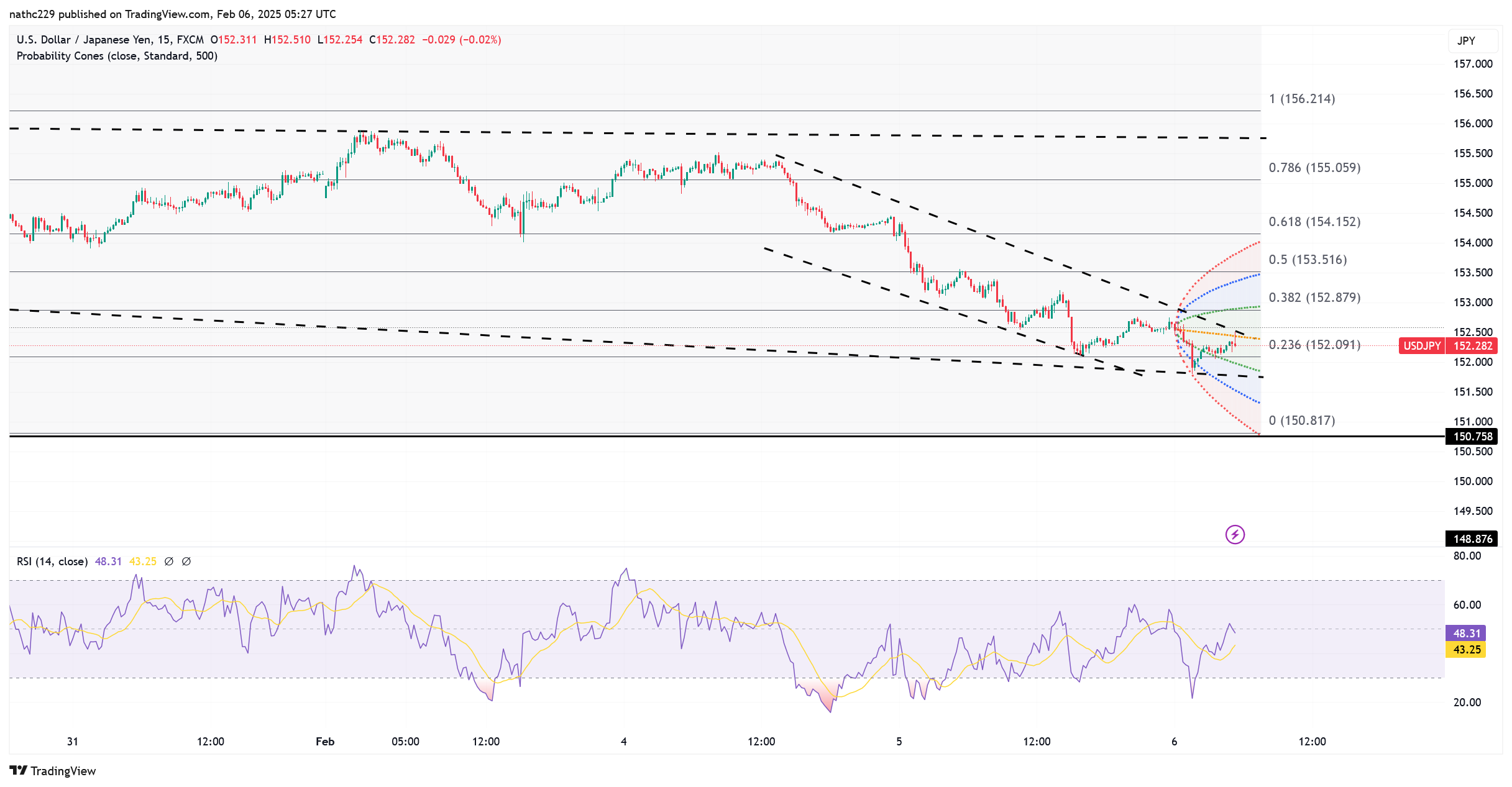BOJ Rate Hike Speculation and Soft U.S. Data Drive USD/JPY Lower

USD/JPY fell sharply on Wednesday, slipping below the 200-day and 100-day moving averages as a combination of BOJ rate hike expectations and declining U.S. Treasury yields pressured the pair. Japanese wage growth, corporate earnings, and strong PMI data have significantly strengthened the case for policy normalization, driving the 2-year JGB yield to its highest level since 2008. Governor Ueda’s stance on ensuring a sustainable 2% inflation target has fueled market speculation that the BOJ could hike rates before July, with options markets increasingly reflecting this expectation. At the same time, ongoing global tariff concerns have bolstered demand for the yen as a safe haven.
The technical landscape for USD/JPY has turned bearish. The break below the 200-DMA and 100-DMA at 152.73-152.80 signals a shift in momentum, with support now seen at 152.00, a critical pivot from November 2023. Below that, the next key level is 151.92-151.94, a previous double-top from October 2022 and November 2023, with the 38.2% Fibonacci retracement of the September-to-January rally at 151.50 serving as a crucial downside target. Resistance is seen at 153.37, the Ichimoku cloud bottom, which needs to be breached to negate the current bearish bias.
Market participants will focus on upcoming BOJ and U.S. data releases for further directional cues. With BOJ board member Tamura Naoki scheduled to speak, any hawkish rhetoric could reinforce yen strength, particularly as expectations for U.S. rate cuts continue to rise. Additionally, Japan’s current account data and MOF flows could provide further insight into yen demand. Meanwhile, political developments—including a reported meeting between Trump and Ishiba aimed at reinforcing U.S.-Japan relations—may also impact USD/JPY sentiment. Unless the pair reclaims key resistance levels, downside risks remain dominant.

